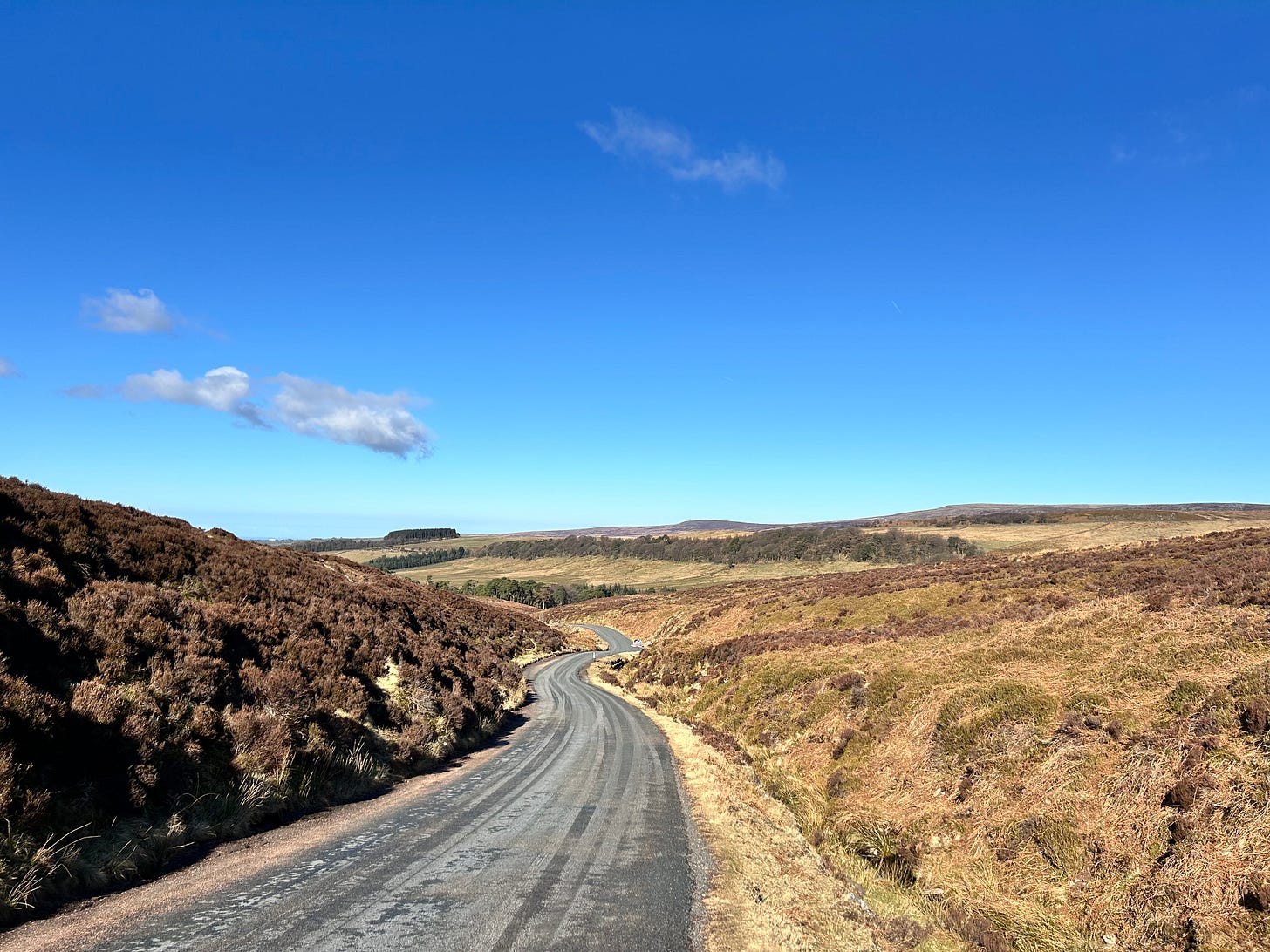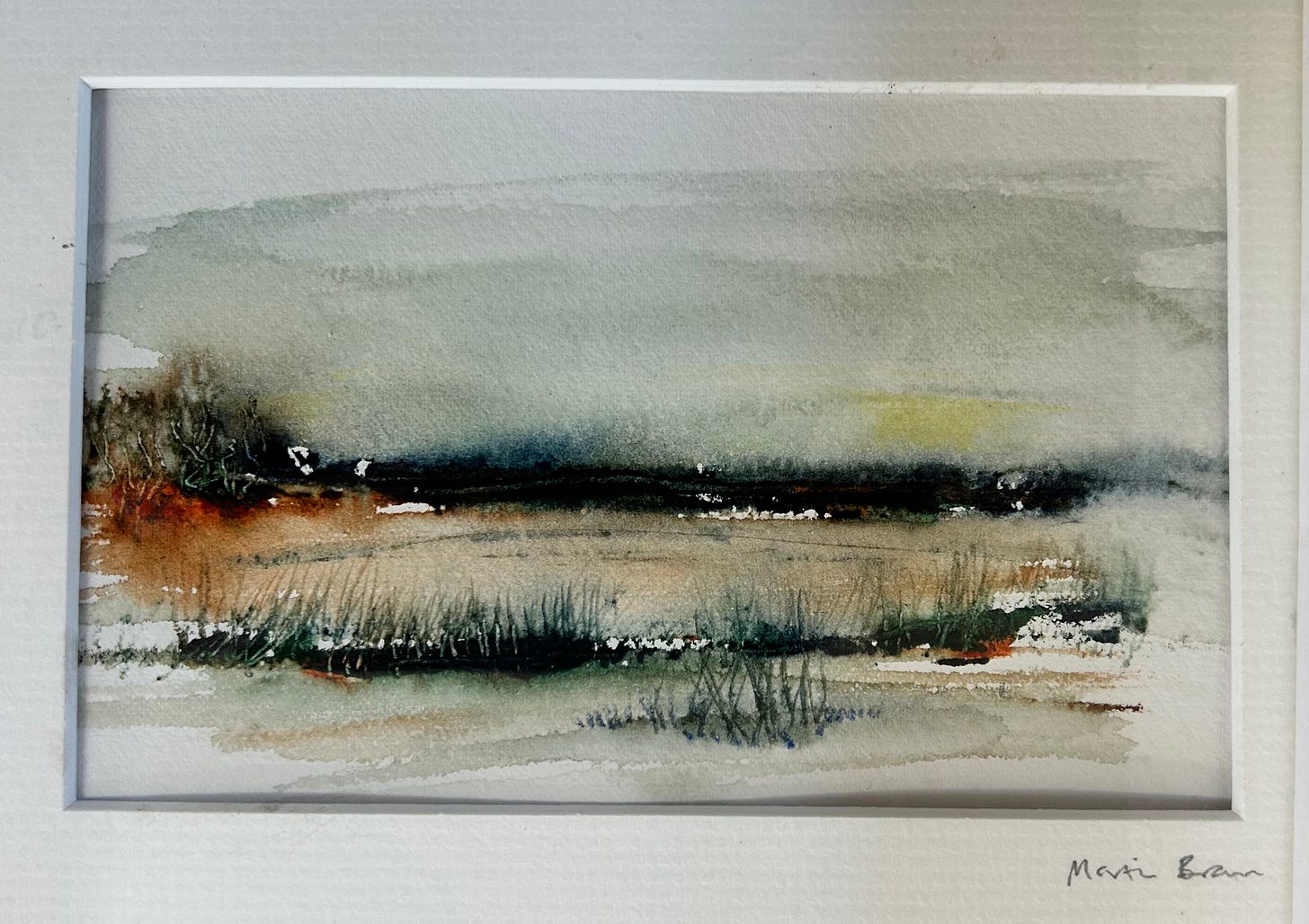A while back on Regen Notes, I explored rethinking biophilia and biophilic design, an exploration that included William Wordsworth. Several events and chats recently have inspired me to go back to notes I made at that time around what I consider, from a biophilia perspective, probably the most powerful of verses to reflect on.

As a contemplative anchor, it is a few lines that can help access the feeling of deep connection with nature, reflect and inspire better designs that are part of nature and a continuum from past into the present and on into the future.
Written in 1789 heralding in the Romantic1 era it is a verse that encapsulates biophilia and biophilic design and deepens our relationship with the natural world in the present moment.
Could it be this is all we need as a powerful foundation for advancing biophilia … going as it does to the soul of who we are?
Wordsworth, a pivotal figure in Romanticism at the turn of the 19th century, fundamentally reshaped how people perceived nature, emotions and individual experiences. Just as we today are seeking to refind and reshape our relationship and place in nature through our building designs. New Romanticism.
So may I suggest, to find a quiet place, and give yourself the time and space to mindfully and carefully savour each line and reflect - it will significantly deepen your understanding and application of biophilia in design.2
I have felt
A presence that disturbs me with the joy
Of elevated thoughts; a sense sublime
Of something far more deeply interfused,
Whose dwelling is the light of setting suns,
And the round ocean and the living air,
And the blue sky, and in the mind of man
From Wordsworth's "Lines Composed a Few Miles above Tintern Abbey" I have felt
Wordsworth begins with direct personal experience, not theory or intellectualism but lived sensation, lived experience. This aligns with our modern biophilia emphasis on the personal and experiential connection with nature. The simplicity of “I have felt” grounds what follows in his experience, suggesting that our relationship with nature is fundamentally embodied and sensory before it becomes intellectual.
Today, in the world of regenerative and biophilia, rather than intellectualise we need these I have felt expressions. Is it acceptable to simply ask or pronounce what good will look like, as though we are passive observers?
What is it you have felt that grounds your biophilia and biophilic designs?
“A presence that disturbs me with the joy”
A “Presence” suggests nature is an active, animate force echoing biophilia’s recognition of nature as something we instinctively respond to as alive and intentional. I find “Disturbs” interesting, nature’s presence disrupts our consciousness, breaking through our habitual thinking. This disruption isn’t negative but hugely positive, and brings “joy,” And we know from many sources that joy in nature breaks our ego boundaries.
“Of elevated thoughts; a sense sublime”
Nature elevates human consciousness. It is a key aspect of biophilia theory that suggests our cognition evolved in natural settings and functions optimally when reconnected with them. The “sense sublime” references the emotional-cognitive state that we would today call “awe” which has been shown to reduce stress, increase pro-social behaviour, and expand perception of time.
“Of something far more deeply interfused,”
Oh the beauty of this line, of everything connected, pre-dating our current systems thinking and deep ecology?. “Deeply interfused” describes what we now understand as ecological interconnection, living systems and the complex web of relationships that link all living things.
One of the more famous and often quoted lines from John Muir, on everything being connected, may have been influenced by ‘Above Tintern Abbey’ as Muir was known to have carried a copy of Wordsworth with him on his travels into the American Wilderness. Wordsworth's idea that in nature'“we see into the life of things3" parallels Muir's belief that wilderness experiences could heal the human spirit.
“Whose dwelling is the light of setting suns,”
Wordsworth locates his “presence” from the earlier line in specific natural phenomena. This parallels biophilia’s focus on triggers and natural elements (like sunset light) that evolution has primed us to respond to emotionally. The changing light of sunset represents transition and temporality, reminding us of our place in natural cycles.
How do we place or locate what we are seeking to achieve within natural triggers, light, sounds, and experiences?
“And the round ocean and the living air,”
Wordsworth expands to larger systems of oceans and atmosphere, which we now recognise as Earth’s vital regulatory systems. Describing air as “living” resonates with James Lovelock’s Gaia hypothesis that Earth functions as a self-regulating, living system. This suggests a symbiocentric rather than an anthropocentric worldview, something we are once again shifting towards.
“And the blue sky, and in the mind of man.”
The culminating line reveals Wordsworth’s most profound insight: nature exists both externally and within human consciousness, perfectly highlighting biophilia’s central premise, that nature is not separate from humanity but constitutive of our minds through evolutionary history. Our brains evolved in and for natural environments, and our cognition still depends on that relationship.
Wordsworth brilliantly captures what modern biophilia, eco-psychology, and eco-philosophy have scientifically validated since he wrote 200 years ago, that humans have an innate need to connect with the living world, that this connection enhances our psychological wellbeing, and that the boundary between “nature” and “human” is illusory, we are nature thinking about itself, ourself.
I would love to hear your thoughts on this verse, how you reflected, what thoughts it surfaced and what you may now do differently.
Wordsworth Romantics influence extended well beyond poetry, into Classical Music (Beethoven with the Pastoral Symphony that directly connects us to nature, evoking countryside scenes and storms while exploring profound emotional experiences.) and Art (Turner with the Snow Storm for example that captures nature’s spiritual and emotional essence). It was all about passion, feeling, drama … and Nature, and set out to evoke profound emotional responses.
With passion, feeling, and deeper understanding of Nature we can shift away from rationalising our relationship with nature only being expressed through patterns and attributes, through frameworks, checklists and back to what we are feeling, emotion and the individual experience.
While with an eye made quiet by the power
Of harmony, and the deep power of joy,
We see into the life of things.
(Also from Wordsworth ‘Tintern Abbey)



Beautiful, Martin. Thank you.